Mount Amakazari: Ascend the "Maiden's Mountain" for Japan's Most Spectacular Autumn Foliage Trek
6/24/2025
30views
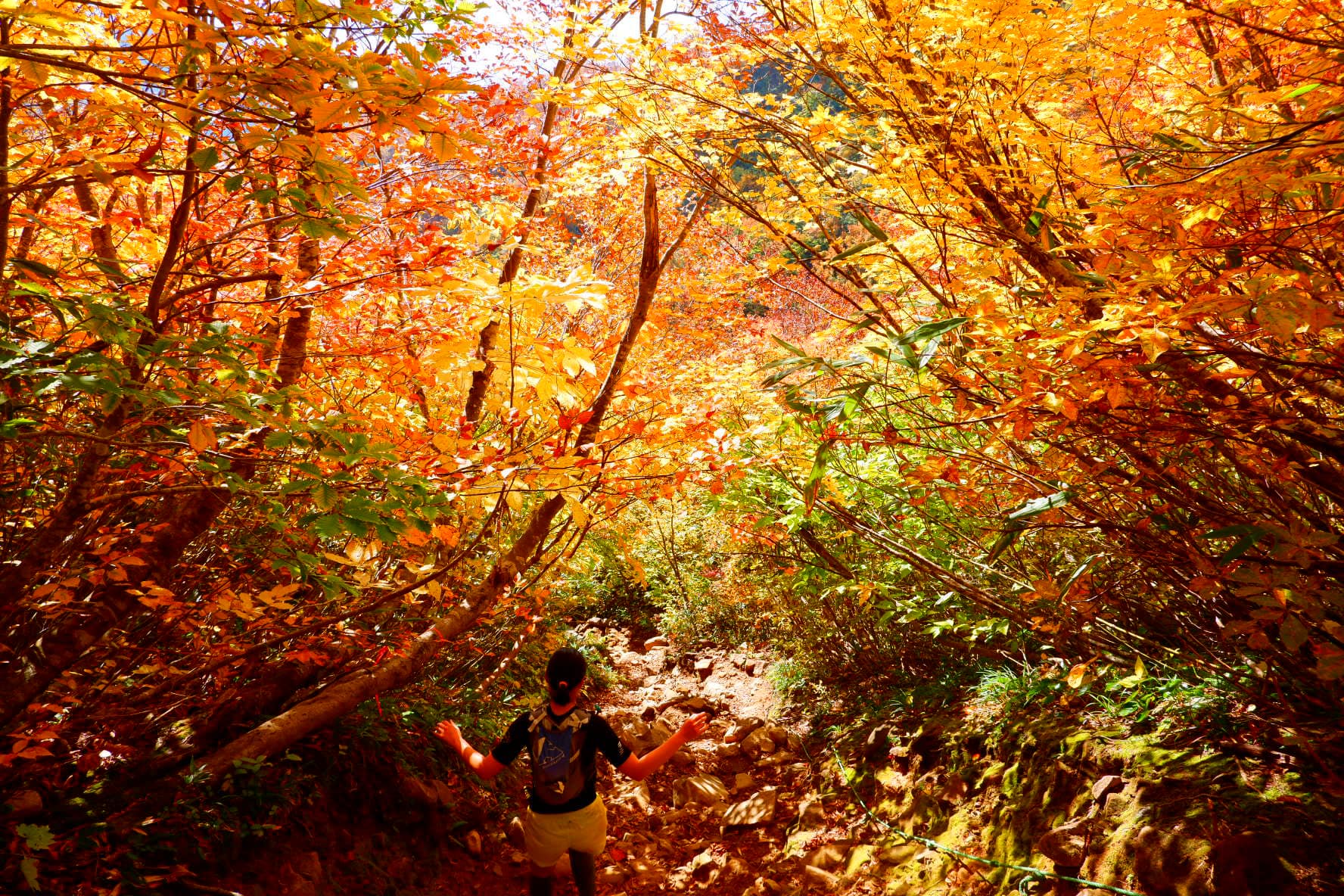
Japan, a land renowned for its vibrant autumn foliage, holds many secrets beyond its well-trodden tourist paths. Among these hidden gems lies a mountain that, while not as globally famous as Fuji, offers an equally breathtaking spectacle of nature's artistry: Amakazari-yama. Known as one of Japan's 100 Famous Mountains, its name, meaning "Maiden Adorning Her Hair," perfectly captures its graceful silhouette, especially when adorned in the fiery hues of autumn.
Having explored countless peaks across Japan, I, Ryoto, can attest that Amakazari-yama provides an experience unlike any other. The sheer awe inspired by its "brocade autumn" (錦秋 - Kinshu) forests, where every leaf seems to glow with an inner light, is something that stays with you long after you've descended. It's a place where the grandeur of nature truly touches your soul.
Through this guide, I aim to unveil the unique allure of Amakazari-yama, detailing what you can expect from a hike here, and why my expertise as a guide is indispensable for foreign travelers seeking to safely and deeply experience this extraordinary Japanese mountain.
Contents
- 01.|The Special Charms of Amakazari-yama: Brocade Autumn Forests and the Joy of a "Hyakumeizan"
- 02.|Amakazari-yama Climbing Details: Routes and Experiential Highlights
- 03.|Why a Guide is Essential for Foreign Travelers: Assurance and Deep Understanding for a Hidden Gem
- 04.|Tips and Precautions for Visiting
- 05.|Conclusion
The Special Charms of Amakazari-yama: Brocade Autumn Forests and the Joy of a "Hyakumeizan"
The "Maiden's Mountain": A Name Rooted in Beauty
Amakazari-yama, standing at 1,963m, straddles the prefectures of Nagano and Niigata. Its distinctive twin peaks are often likened to "cat's ears", but a more poetic legend suggests that the rock formations near the summit resemble the profile of a maiden adorning her hair. This unique geological feature creates a landscape unlike any other, offering diverse scenery from gentle ridges to rugged rocky sections.
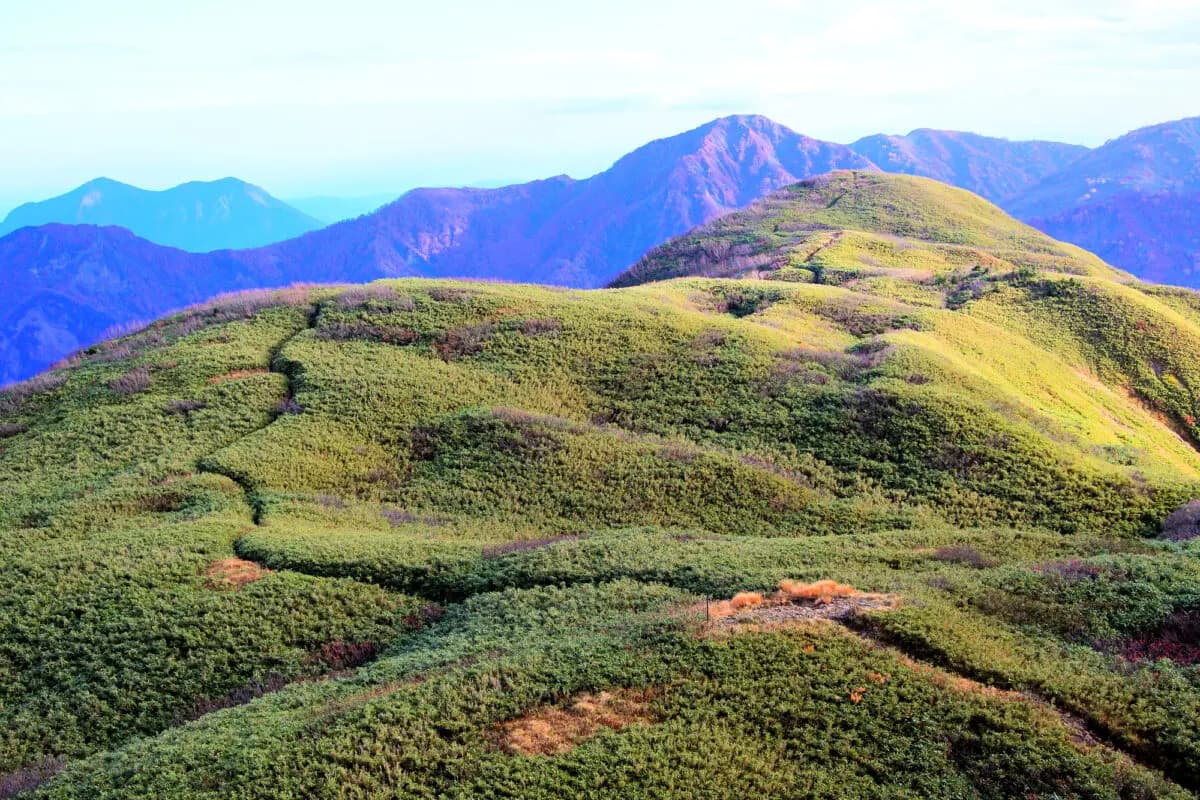
The Overwhelming Beauty of "Brocade Autumn" Foliage
While Amakazari-yama is captivating year-round, autumn transforms it into a spectacle of unparalleled beauty. The Amakazari Kogen area, including the mountain itself, is celebrated as a prime spot for autumn leaves. From October to November, the region bursts into its most colorful display. The transformation begins around late September, with subtle hints of color appearing near Arasugezawa. By early October, as temperatures drop, the entire mountain range rapidly dons its autumn attire. The vast beech primeval forests, along with Japanese rowan (Nanakamado) and maple trees, turn a brilliant golden hue, creating what is often described as a "tunnel of autumn leaves" along the hiking trails. The peak of the autumn foliage typically arrives in mid-October. During this period, a magnificent gradient of red, yellow, and orange unfolds from the summit down to the base. Imagine hiking through a vibrant tunnel of colors, with the crisp autumn air invigorating your senses. On clear days, the contrast of the vivid foliage against a brilliant blue sky is simply stunning. From the summit, you might even witness the "brocade autumn" floating above a sea of clouds, an unforgettable sight.
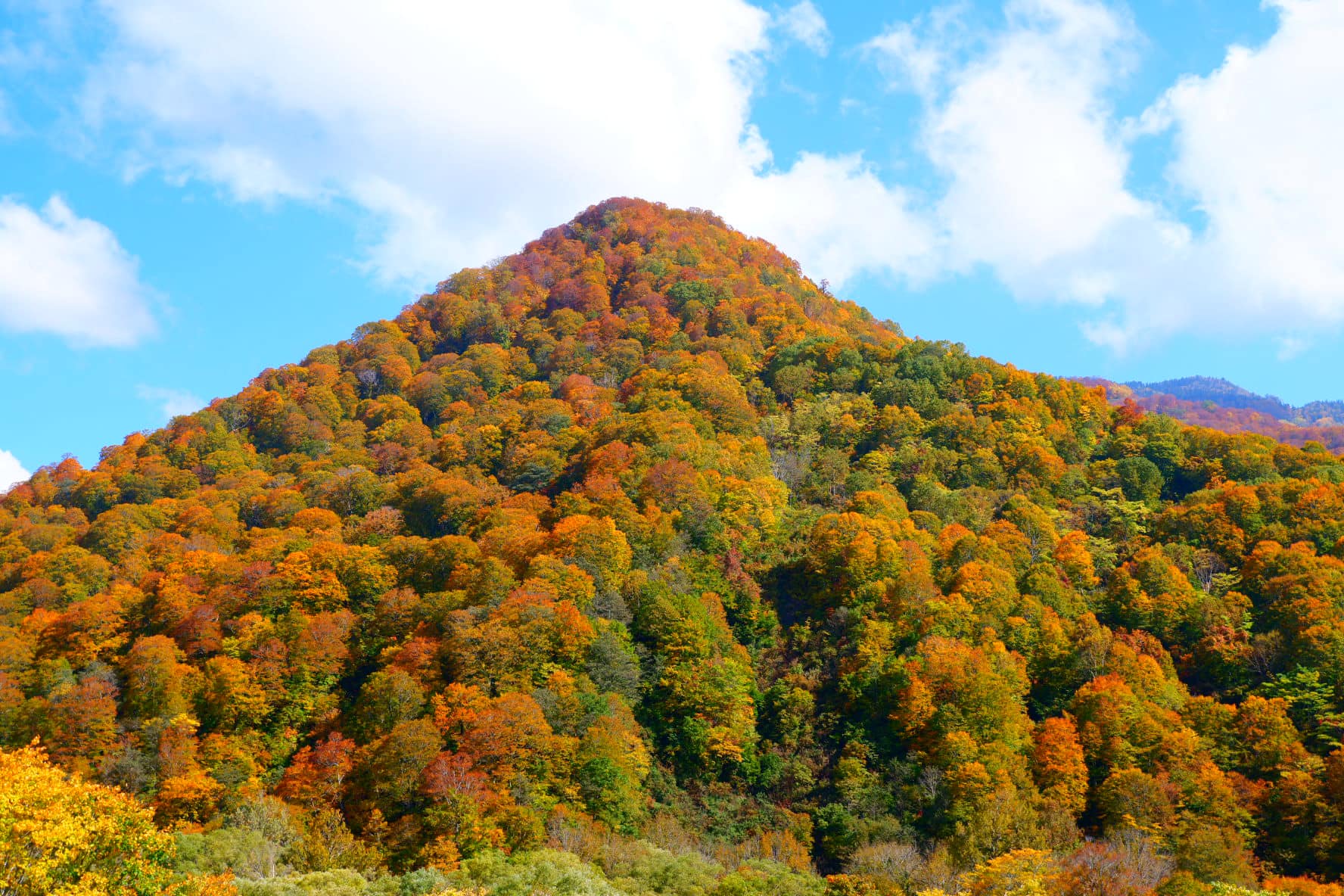
The Sense of Accomplishment as One of Japan's 100 Famous Mountains
Amakazari-yama holds a special place in the hearts of Japanese hikers as one of the "Hyakumeizan" (100 Famous Mountains of Japan), a list compiled by the renowned mountaineer Kyuya Fukada. Conquering a Hyakumeizan brings a profound sense of achievement and connection to Japan's rich mountaineering heritage. From the summit, a 360-degree panorama awaits, offering views of the majestic Northern Alps, the Noto Peninsula, and even Sado Island floating in the Sea of Japan on clear days.

Rich Nature and Unique Ecosystem
The mountain is home to a precious natural environment, including extensive beech primeval forests. This pristine ecosystem supports diverse plant life, and if you're lucky, you might even encounter some of Japan's unique wildlife during your ascent. The vibrant autumn colors are a testament to this rich biodiversity.
Amakazari-yama Climbing Details: Routes and Experiential Highlights
Typical Route: Amakazari Kogen Campground (Otari Side)
While several routes lead to Amakazari-yama's summit, the most popular and generally recommended for enjoying the autumn foliage is the out-and-back route starting from the Amakazari Kogen Campground on the Nagano Prefecture (Otari) side. This route is celebrated for its beautiful beech forests, which are particularly stunning during autumn. Other routes include the "Yakushione" route from Amakazari Onsen on the Niigata side, and the "Oami Trailhead" route, which offers a quieter ascent. The Amakazari Kogen Campground route is rated Difficulty C (★★★☆☆3), indicating that it requires a high level of climbing ability and experience, as a fall could lead to serious injury or death. The total course time is approximately 7 hours (some reports suggest 7 hours 30 minutes including breaks), with about 3 hours 40 minutes for ascent and 3 hours 10 minutes for descent. The route length is approximately 8 km (some reports say 8.14 km), with an accumulated elevation gain and loss of 1040m (some reports say 1041m). This significant elevation change means considerable physical exertion, making prior training essential.
Highlights of the Experience
Crossing Arasugezawa (荒菅沢): An early challenge on the trail, this stream crossing offers a glimpse of the beautiful, clear mountain waters. During autumn, the "Futonbishi" slab, a prominent rock face, is beautifully colored. Be aware that the area around Arasugezawa can be muddy and slippery.
Golden Valley: As you ascend, you'll pass through sections of the trail that become a "golden valley" during the peak autumn season, with the beech forests creating a breathtaking "tunnel of autumn leaves".

Sasadaira (笹平): After a challenging ascent from Arasugezawa, you'll reach Sasadaira, an open bamboo grass plateau. This expansive area offers panoramic views of the surrounding mountains and the vibrant autumn foliage, providing a welcome respite and stunning photo opportunities.
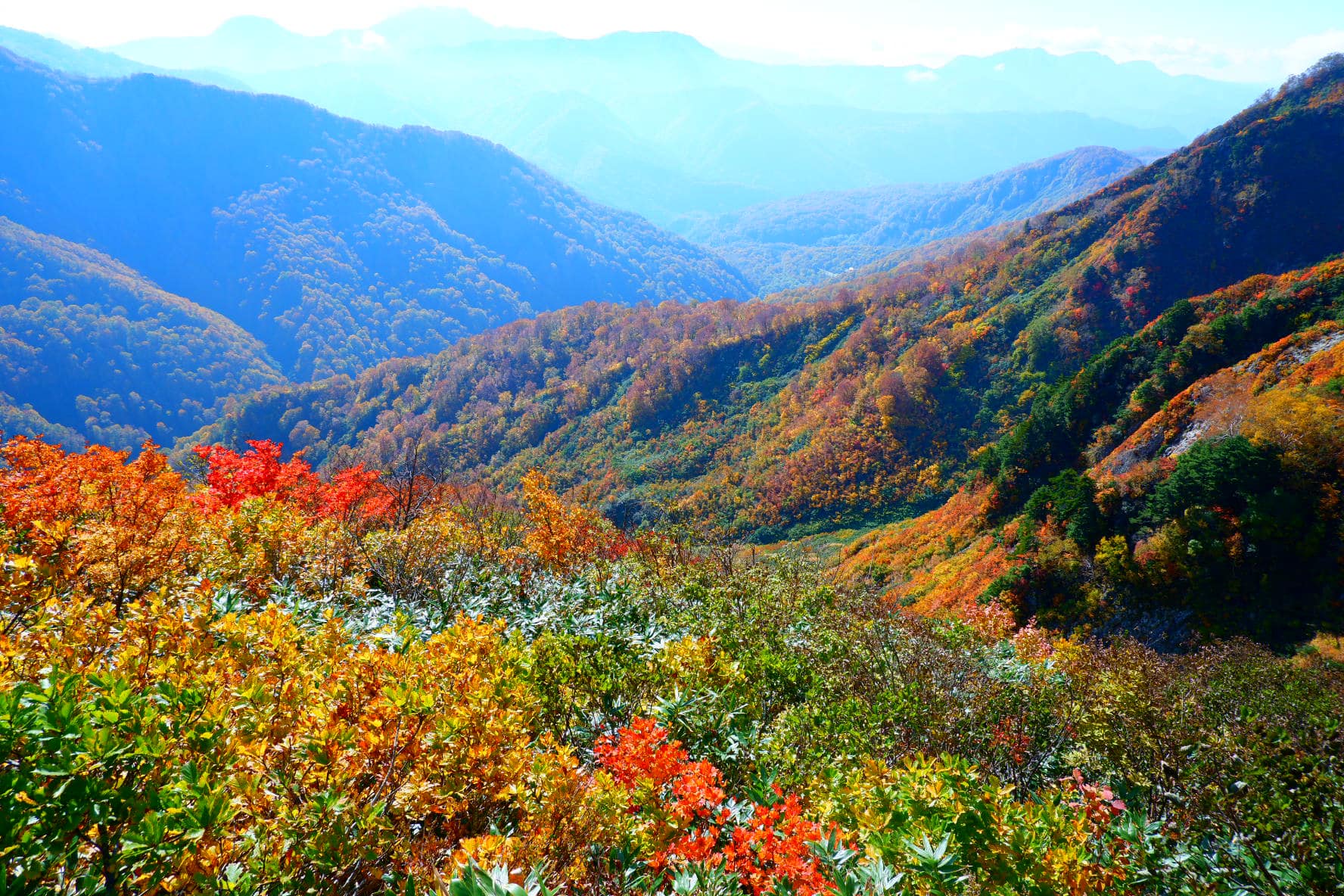
The Summit: The final push to the summit involves steep, rocky sections.But the reward is immense: a 360-degree panoramic view that encompasses the Sea of Japan, the majestic Northern Alps, and other famous peaks like Mt. Hiuchi and Mt. Myoko.
Onsen (Amakazari Sanso): After a challenging hike, there's nothing quite like soaking in a secluded hot spring. Amakazari Sanso, located near the Niigata-side trailhead, offers a rustic, traditional onsen experience, perfect for soothing tired muscles. It's a true "secret hot spring" (秘湯 - hitou) where mobile phone reception is often unavailable.
Physical and Mental Challenge and Accomplishment
Amakazari-yama offers a significant physical and mental challenge. The steep ascents, rocky sections, and ladders demand stamina and concentration. However, overcoming these challenges leads to an incredible sense of accomplishment and a profound connection with nature, providing a unique form of mental and physical rejuvenation.
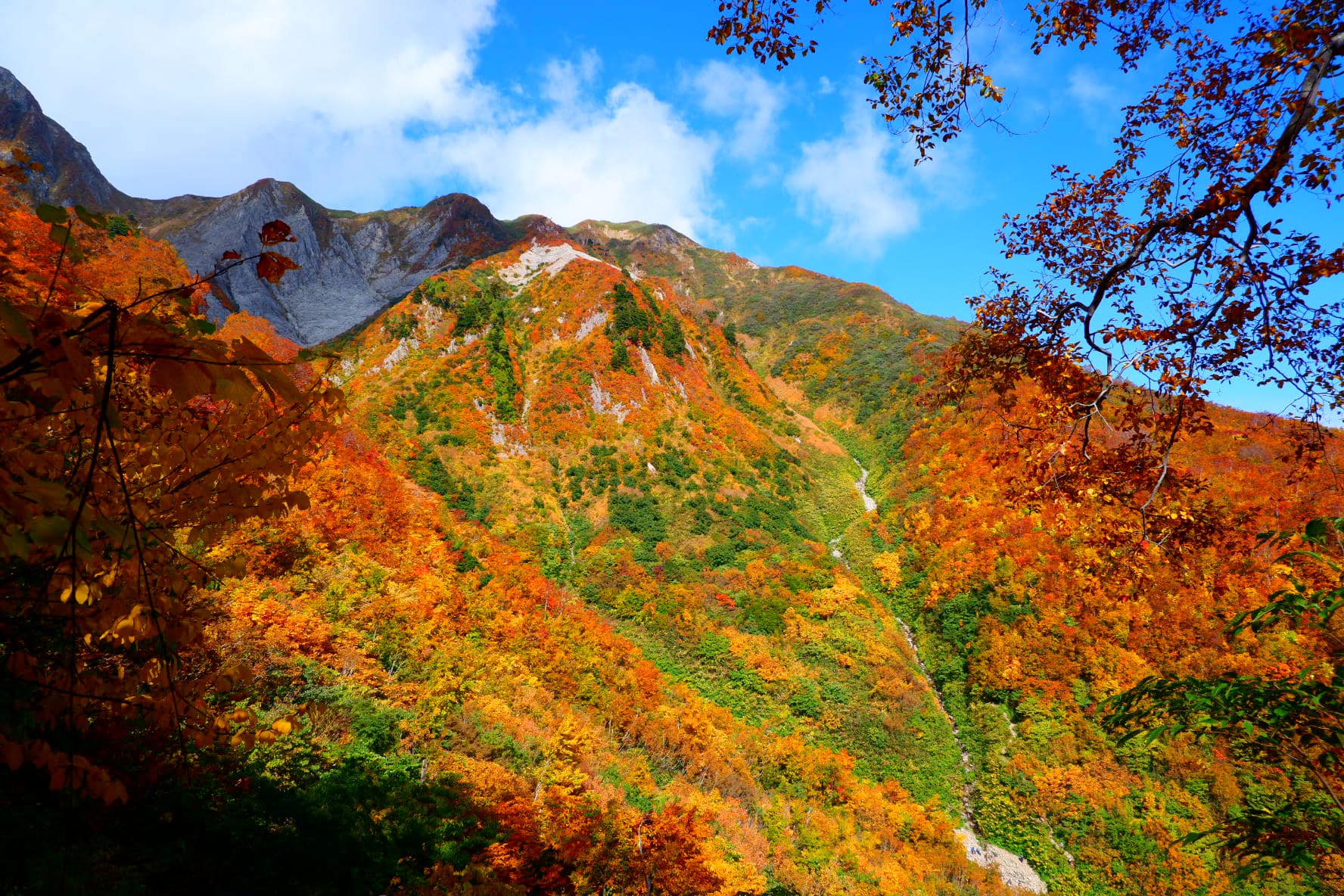
Why a Guide is Essential for Foreign Travelers: Assurance and Deep Understanding for a Hidden Gem
Amakazari-yama, despite its beauty, presents unique challenges for foreign travelers. This is where a knowledgeable guide becomes not just helpful, but indispensable.
Complexity of Access
Public transportation to Amakazari-yama, particularly the village bus from Minami-Otari Station, has limited services, especially during the peak autumn season.Securing transportation to the trailhead can be difficult without local knowledge. Furthermore, during the peak autumn foliage season (mid-October), the parking lots at the trailheads, though free and accommodating around 100 cars, fill up very early, often by 6 AM.Roadside parking is often prohibited on weekends and holidays from late September to late October to ensure emergency vehicle access.Navigating these logistical hurdles requires precise planning and local insight.
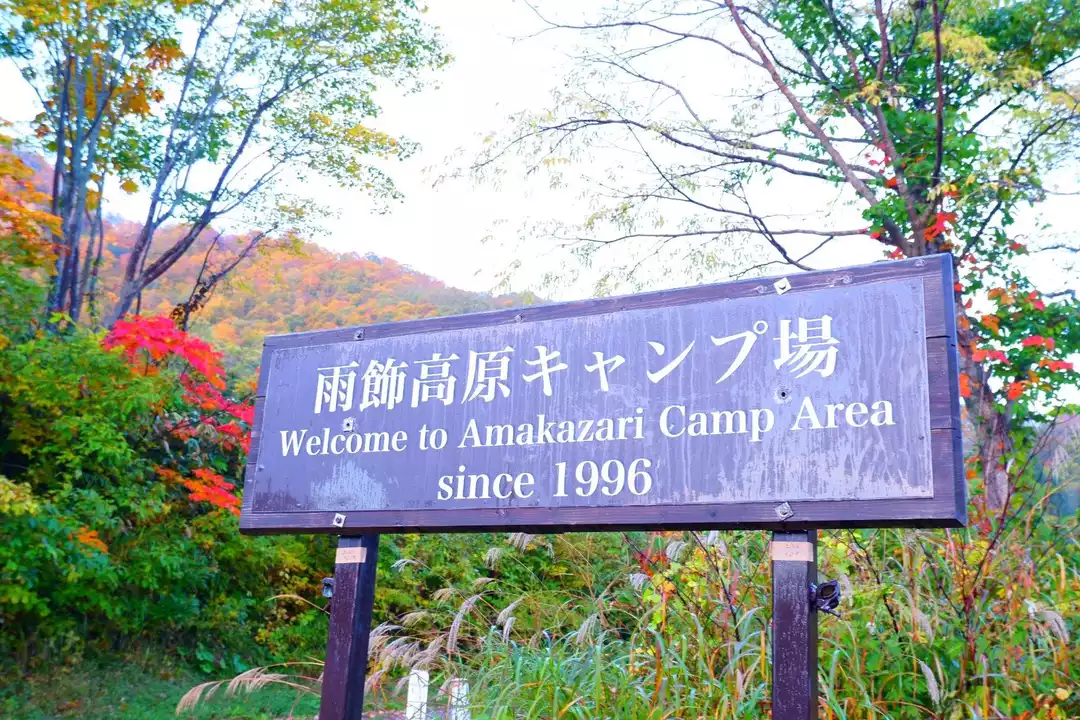
Climbing Difficulty and Safety Management
While the trails are generally well-maintained, Amakazari-yama is rated Difficulty C, meaning it requires significant climbing ability and experience.The trail includes muddy sections, slippery wooden paths (especially when wet with morning dew) , rocky areas, ladders, and even chain sections.The mountain's proximity to the sea and its isolated nature make its weather highly unpredictable, with sudden changes common.Rain can cause trails to become extremely slippery and lead to increased water levels in streams like Arasugezawa, potentially making crossings impossible.There's also a risk of rockfall, particularly near the chain sections and the summit's rocky areas, especially when crowded.Proper equipment, including high-grip hiking boots and waterproof gear, is crucial.
Language Barrier and Information Gap
At trailheads and mountain huts, real-time information regarding trail conditions, weather updates, and any closures is primarily available in Japanese.Trail markers are also predominantly in Japanese. In an emergency, communicating effectively with local authorities (police, fire department) can be challenging due to language barriers.Detailed, up-to-date hiking information tailored for foreign visitors is often scarce.
The Value of Your Guide (Ryoto)
This is where my services become invaluable:
Safety Professional: With years of mountaineering experience, deep knowledge of Amakazari-yama, and robust crisis management skills, I prioritize your safety above all else. I accurately assess changing mountain weather and trail conditions, ensuring a secure and worry-free ascent.
Perfect Logistics: From arranging transportation to the trailhead, advising on and assisting with necessary equipment, to providing comprehensive pre-trip information, I handle all the logistics. This allows you to focus entirely on the joy of the hike.
Deep Nature and Culture Commentary: Beyond simply guiding you through the scenery, I offer insights into Amakazari-yama's unique flora, fauna, and ecosystem. I also share the cultural significance of Japan's mountain worship and the "Hyakumeizan" tradition, enriching your experience with stories not found in guidebooks.
Bilingual Support: I provide seamless communication in both English and French, bridging any language gaps you might encounter.
Van Life Expertise: My extensive experience living and traveling in a van has given me a unique understanding of Japan's diverse mountains and the adaptability required for wild trekking. I leverage this knowledge to transform your journey into a deeper, more personalized adventure.
Tips and Precautions for Visiting
Best Season
The absolute best time to visit Amakazari-yama for autumn foliage is from early to mid-October, when the colors are at their peak.This period offers the most spectacular and memorable views.
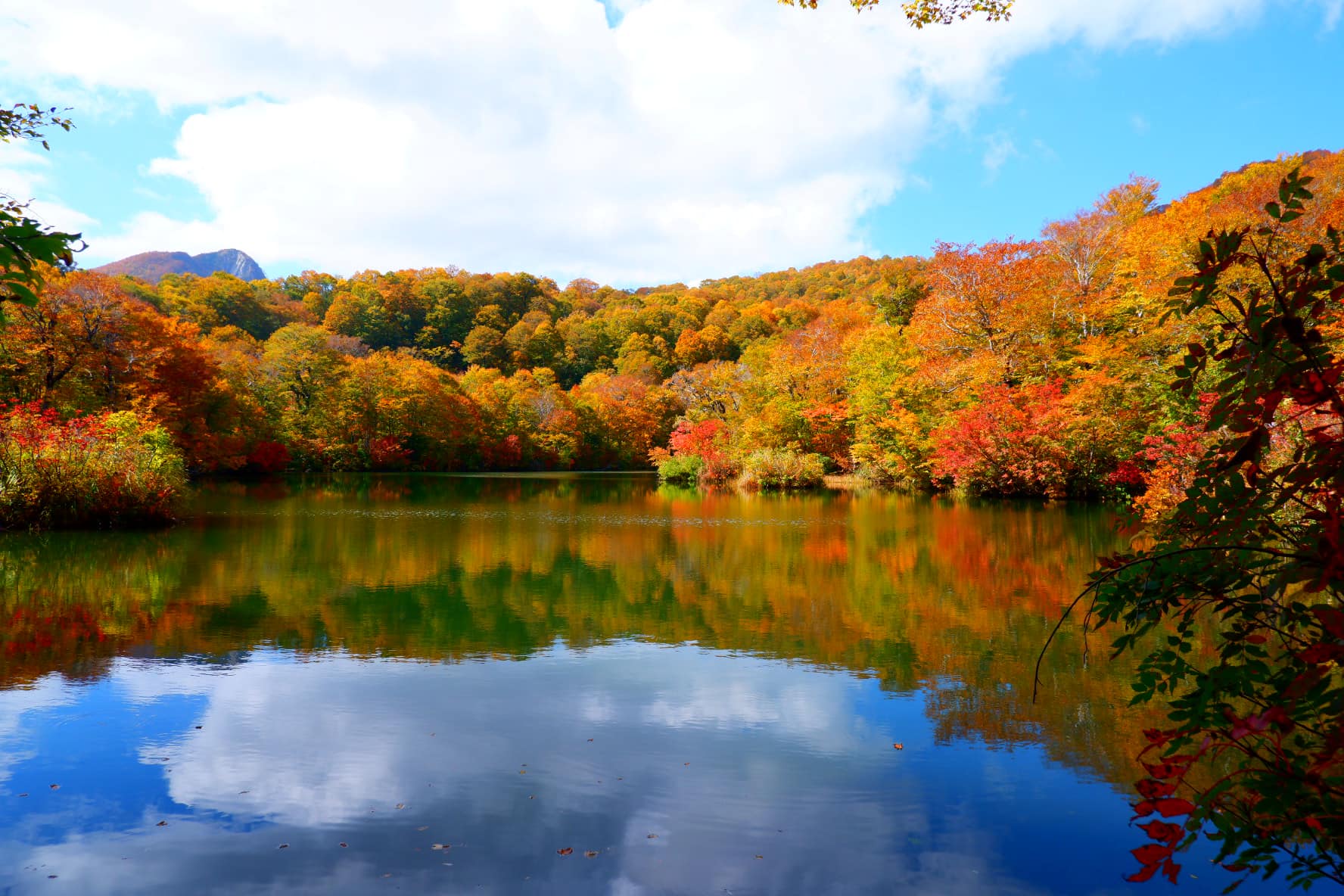
Crowds and Reservations
Due to its immense popularity, especially during the peak autumn season, Amakazari-yama can become very crowded on weekends and public holidays in October. It is highly recommended to consider hiking on weekdays to avoid congestion. If a weekend hike is unavoidable, plan to arrive at the trailhead very early (before 6 AM) to secure parking and start your ascent before the 9 AM entry regulation. Pre-booking any accommodation or specific transportation (like taxis from Itoigawa Station) is essential.
Required Equipment
Proper gear is non-negotiable for a safe and comfortable hike:
Hiking Boots: Choose waterproof boots with excellent grip to handle muddy and rocky sections.
Rainwear: A high-quality, two-piece (jacket and pants) waterproof and breathable rain suit is essential, even on sunny days, as mountain weather can change rapidly. It also serves as a windbreaker and extra insulation.
Warm Clothing: Layers are key. Bring fleece or a light down jacket, as temperatures can drop significantly, especially at higher altitudes and in the mornings/evenings.
Backpack: A 20-30L daypack with a rain cover is suitable.
Headlamp + Spare Batteries: Crucial for visibility in case of unexpected delays or low light conditions.
Action Food & Water: Carry enough high-energy snacks (e.g., rice balls, energy gels, bananas for potassium) and at least 2 liters of water/sports drinks. Dehydration and salt/potassium deficiency can lead to cramps and mild heatstroke.
Map & Compass + GPS: Essential for navigation, especially in foggy or low-visibility conditions. Use a paper map and compass, and supplement with a GPS-enabled smartphone app (like YAMAP).
Gloves: Protect your hands on rocky sections and ladders, and provide warmth.
Bear Bell: Essential to alert bears to your presence and avoid encounters.
Portable Toilet: There are no regular toilets on the trail, only a portable toilet booth near Arasugezawa. Portable toilets can be purchased at the trailhead vending machine.
Physical Fitness and Experience
Amakazari-yama is best suited for hikers with general mountaineering experience. It demands good physical stamina and concentration, particularly on the steep and varied terrain.It is not recommended for those with a fear of heights due to some exposed sections.
Safety Measures
Weather Changes: Be constantly aware of sudden weather shifts. Check mountain-specific forecasts like "Tenki to Kurasu" before and during your hike.
Early Start & Realistic Plan: Begin your hike early to ensure ample time for descent before dark, especially given the 9 AM entry restriction.Plan your route with sufficient time buffers.
Rockfall & Slips: Exercise extreme caution on muddy paths, rocky sections, and ladders, as they can be very slippery.Be vigilant for potential rockfall, especially in crowded areas.
Mountain Hut/Shelter: There are no official mountain huts or emergency shelters directly on the Amakazari-yama climbing trail.The portable toilet booth near Arasugezawa is for emergency use only.Hikers should be prepared to self-rescue or bivouac with a lightweight shelter (like a bivy sack or tarp) and sufficient warm clothing in case of an emergency.
Submit a Climbing Plan: In Nagano Prefecture, submitting a climbing plan is mandatory for designated trails.This aids in swift rescue operations in case of an emergency.You can submit it online via "Compass" or "YAMAP" apps, or at the trailhead post.
Conclusion
Amakazari-yama, the "Maiden's Mountain," with its graceful form and the breathtaking spectacle of its "brocade autumn" foliage, truly stands out as one of Japan's most impressive Hyakumeizan. It's a place where the raw beauty of nature combines with the thrill of a challenging ascent to create an unforgettable experience.Are you ready to liberate your mind and body amidst the vibrant colors of this hidden mountain paradise, and feel the grandeur of Japan's nature with every fiber of your being?For foreign travelers, planning a hike to Amakazari-yama can be complex. But with me, Ryoto, as your guide, you can embark on this journey safely and in the best possible way. I will craft a completely customized wild trekking experience tailored to your skills and desires. Let's create unforgettable autumn memories amidst the stunning "Kinshu" landscapes of Amakazari-yama!